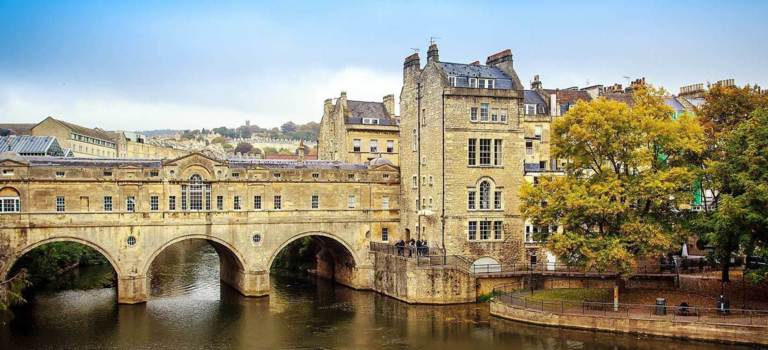News

Hope for tomorrow
Friday 9th February 2024
The last few years have been volatile for investors. It began with the rapid sell off, and then recovery, related to the Covid pandemic in 2020/21. It continued into 2022 with the Ukraine war and increase in interest rates which impacted markets negatively. Finally, we had the rapid market recovery (Santa Rally) of late 2023 as both interest rate and inflation expectations fell.
Against this backdrop how has this year started?
Central banks are holding steady. The US Federal Reserve and the Bank of England (BoE) held meetings last week, following the European Central Bank’s (ECB) monetary policy meeting the week before. All three left interest rates unchanged, as was widely expected by markets. With the current policy of maintained interest rates a near-certainty, investors are more interested in hints at how the future might look and it was, as before, the comments made rather than the actual action that was the focus.
The Santa rally we reported on was led by an expectation of six interest rate cuts in the US this year starting in March and reality seems to have hit home a bit as the Central Banks fear that easing too soon on interest rates would bring back inflation. The US economy is strong even as inflation numbers continue to drop, for example creating more new jobs than expected. The US economy grew at an annualised rate of 3.3% in the last quarter of 2023, well above forecasts of 2% and means that their economy expanded 2.5% for the whole of 2023 – begging the question why would the Federal Reserve now risk overheating the economy by easing rates? Federal Reserve chairman Powell disappointed some investors, saying he doesn’t feel confident enough that he could cut interest rates by March, as they are still watching inflation, so maybe three cuts later this year seems about right. It is a delicate balancing act, just how robust will the economy prove to sustained higher interest rates? And, just how high can the Federal Reserve keep rates without crashing the economy as they try to dampen down the over enthusiastic markets?
The UK outlook
At the Bank of England (BoE) meeting, the most obvious relaxation of their stance was evident in the voting. In December, three members had voted for a further increase. In January, that was just two, while one had even voted for an interest rate cut. Economic forecasts for the UK have been downbeat and inflation has been high. The elevated level of inflation has weighed on growth. However, consumer confidence has improved, the housing market has stabilised, and business surveys show growing confidence. Unlike the US, there is clear evidence of the UK labour market weakening, which ought to be enough to keep the two members of the BoE’s Monetary Policy Committee wanting an interest rate rise in the minority. It doesn’t though currently seem sufficient to trigger the interest rate cuts the market is expecting. Compared to the US, we have a much weaker economy, but given the higher rate of UK inflation, markets do not price in a UK rate cut until June, even though growth has been close to zero for over a year.
The European picture
Though not to the same extent, the European Central Bank (ECB) has shown similar caution recently. The Eurozone economy is stagnant and contracting in some areas – most notably its German powerhouse – while core inflation has slowed dramatically and high financing costs are holding back demand for loans. But the ECB left rates unchanged and urged for patience in cutting rates despite declaring the inflation battle won. The reasoning is the same in Europe as elsewhere: the labour market is much too tight for its liking, and they are anxious not to underestimate price pressures again.
What next for inflation and interest rates?
The fear after the Santa Rally was that markets would fall as reality came home and interest rates wouldn’t be cut as quickly or aggressively as at first thought. Whilst this was borne out in the first couple of weeks of the year, the hangover has been short lived and markets subsequently bounced back. There is optimism and a view interest rates have “normalised” and so taking the mispricing of money out the market. The long-term results of too-low interest rates include too much debt, under-investment and speculative bubbles. Companies borrow money to buy-back shares creating short-term value boost, rather than build long-term value. Consumers leverage up to buy luxury goods of little benefit or long-term appreciation. Investors speculate because they expect low rates reduce financial risks. Ultimately, the result is higher debt servicing costs slow the economy long-term.
The era of very cheap money is over which will halt an over-inflated market from distorting economic behaviours and the good news, particularly in the US is that the economy has dealt very well with the higher more normal interest rates. Of course the lag effect of interest rate rises is yet to be seen and why the Central Banks are being so patient, you only have to think in the UK 1.6 million this year have fixed rate mortgages coming to an end and the impact of the higher rates yet to be felt. Central banks will not be bounced into early cuts in case they fan latent inflation. The rhetoric from central banks remains caution over all else. That is not a sign of them making decisions in a vacuum, or being unable to figure it out. The one thing central banks are not is stupid – the central bank dialogue flow is very deliberate. This means there is actually very little scope to actually ease rates much below 4% if inflation remains sticky at 3%. The market is not going back to 2% or Zero interest rates.
Responsible Funds (ESG) – What is “G”?
When analysing Environmental, Social, and Governance factors, the “G” element is often forgotten amid considerations over climate risk, societal implications and other “E” and “S” risks and opportunities.
Governance is the set of rules, practices, and processes that determine how a company is operated and controlled. Its main aim is to ensure that the company acts in an open and accountable manner, and that its leadership acts in the best interests of stakeholders, including employees. Corporate governance encompasses virtually every aspect of management, making its risks material to all companies, regardless of the industry.
With recognition that a company’s board of directors, shareholders, management, and employees have certain rights, good corporate governance policies incorporate measures to ensure those rights are protected. These measures may include processes for selecting and evaluating board members, establishing committees for auditing, and implementing codes of conduct and ethics. If implemented correctly, corporate governance aligns the interests of directors, shareholders, management, and employees and builds trust with investors, the community, and public officials. Good Governance means a business well run and more productive.
Poor corporate governance practices have stood at the core of some of the biggest corporate scandals, Volkswagen’s emissions tests being a good example. In the UK the best example of the worst level of Governance is the Post Office Scandal. If you ever want to remember what “G” is or in this case isn’t, think of the Post Office as the successive Chief Executives, Chairpersons and members of the Post Office board since the inception of Horizon failed so dramatically.
While performance of responsible portfolios can fluctuate vs traditional funds in the short term, the combination of greater policy focus and a more accommodative investment backdrop we believe will be beneficial for responsible investing going forwards, particularly as interest rates seem to have peaked .
From a climate perspective, trends in climate finance, combined with increasing governmental policies and corporate commitments to net zero should lead to strong growth for companies providing solutions for decarbonisation. Governments are increasingly recognising the urgent need to manage climate change as one of the key tail risks to long-term economic growth, this was reflected through commitments made at COP28 and in policies such as the US Inflation Reduction Act. In a year when over 40 countries will go to the polls, nothing is certain about future policy direction however the pressure for policymakers to manage the risk of climate change and invest in climate mitigation and adaption is not going away. Click here to look at some good news climate stories courtesy of Future Crunch.
China’s carbon emissions are likely to start falling this year. This, and not COP28, was the most important climate change story of 2023 year, because China is the world's largest carbon polluter, and was supposed to still be six years away from peak emissions. The reason for this epochal shift? The country's unprecedented buildout of 300 GW of solar and wind in 2023, almost double its 2022 total. It's the largest ever single year deployment of energy in history.
Humanity will install an astonishing 413 GW of solar this year, 58% more than in 2022, which itself marked an almost 42% increase from 2021. That means the world's solar capacity has doubled in the last 18 months, and that solar is now the fastest-growing energy technology in history. In September, the IEA announced that solar photovoltaic installations are now ahead of the trajectory required to reach net zero by 2050, and that if solar maintains this kind of growth, it will become the world's dominant source of energy before the end of this decade.
The clean energy revolution was ramped up in many countries in 2023. Rooftop solar overtook coal as Australia's biggest source of electricity capacity, the Philippines saw explosive growth in offshore wind, South Africa's rooftop solar sector became the fastest growing in the world, Canada became the second-most attractive place in the world for renewables developers (after the United States), Brazil invested billions into grid transmission, the United Kingdom reported that carbon emissions have fallen by more than two-thirds in a decade, and Vietnam finalised its Just Transition agreement, including no new coal, which is great news for the planet, because it has the world's third largest coal pipeline.



